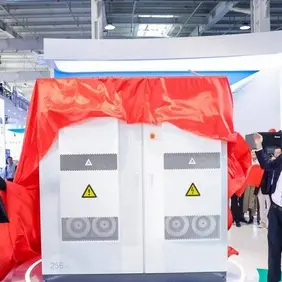PHOTO
The rapid shift to green hydrogen presents Gulf Cooperation Council (GCC) countries with an opportunity to play a leading role in this new industry. Green hydrogen could become a major and versatile power source of the decarbonized future. By 2050, global green hydrogen demand is expected to exceed 530 million tons, equivalent to around 7 percent of global primary energy consumption. This would displace 10 billion of barrels of oil equivalent per year, around 37 percent of current global oil production. Strategy& report highlights the best ways for GCC producers to supply large export markets by using renewable energy to produce and convert green hydrogen to green ammonia.
“The green hydrogen economy is coming but will entail building a new energy ecosystem with unique requirements and, as yet, many unsettled elements. Although technically proven, green ammonia production is not yet operating at industrial levels. However, with several large-scale demonstrator projects currently under way, commercialization is imminent”, said Dr. Ulrich Koegler, partner with Strategy& Middle East. At the other end of the supply chain, ammonia “cracking” technology still requires further development to extract high-purity hydrogen cost effectively at the volumes required.
Currently, the GCC possesses several advantages in producing green hydrogen, such as abundant, low cost, renewable energy resources. However, that is not enough to win in the global market. Green hydrogen transportation can be extremely expensive, costing up to twice as much as the initial production cost. As a result, the main challenge in supplying green hydrogen to large import markets like Europe and East Asia will be containing cost along the entire supply chain.
James Thomas, partner with Strategy& Middle East added, “There are several reasons why ammonia makes sense as a transportation means for hydrogen: It’s safe and requires considerably less complexity to transport compared to gaseous hydrogen”. The ammonia value chain and trading patterns are already well established, albeit operating at a fraction of the volume required to be a material component in the energy mix; and there are also existing international shipping routes that overlap with potential green hydrogen export flows, and a network of ports worldwide that can handle ammonia at industrial scale. “Several initiatives are under way to make green ammonia the long-distance hydrogen carrier of choice, including high-profile projects in Australia and recent announcements in Saudi Arabia”, added Thomas.
Furthermore, there is an immediate imperative for GCC countries over the next three to five years to lay the groundwork for a well-functioning green hydrogen economy for domestic use and export. This requires policymakers to define a national strategy for a green hydrogen ecosystem; establish the policy, regulatory, and investment environment that will instill confidence among participants and lead to faster progress; and initiate projects to develop and demonstrate green hydrogen technologies and to establish the formula for commercial success.
According to the report, there are four long-term strategic priorities for GCC producers to lead the green hydrogen export market:
- Establish lowest-cost, large-scale green hydrogen production capability
GCC countries should continue to invest in utility-scale solar farms to achieve low-cost renewable electricity input prices for hydrogen production and deploy the electrolyzer technology most suited to large-scale green hydrogen production.
- Focus on green ammonia production as a hydrogen carrier and storage medium
This must be a key focus area for research and development (R&D) spending and an opportunity to localize world-leading capabilities in the GCC that will underpin the new global hydrogen economy.
- Master ammonia cracking in key port destinations
The choice of export markets is critical. GCC exporters should adopt a long-term view and focus on a relatively small number of markets with sustainable demand due to high consumption and low production potential.
- Create green hydrogen hubs
To achieve maximum cost efficiency, GCC exporters should establish integrated green hydrogen–ammonia infrastructure hubs focused on domestic production and centralized reconversion activities in export destinations. In the GCC, these hubs could be co-located with, or near, renewable electricity generation.
“Although many countries have ambitious plans for green hydrogen, the GCC states have unique advantages that could allow them to play a leading role in the hydrogen economy. By seizing the green hydrogen opportunity, GCC countries can lay the foundation for economic growth in a decarbonized world and ensure their continued influence in energy markets,” concluded Susie Almasi, Executive Advisor with Strategy& Middle East.
© Press Release 2020
Disclaimer: The contents of this press release was provided from an external third party provider. This website is not responsible for, and does not control, such external content. This content is provided on an “as is” and “as available” basis and has not been edited in any way. Neither this website nor our affiliates guarantee the accuracy of or endorse the views or opinions expressed in this press release.
The press release is provided for informational purposes only. The content does not provide tax, legal or investment advice or opinion regarding the suitability, value or profitability of any particular security, portfolio or investment strategy. Neither this website nor our affiliates shall be liable for any errors or inaccuracies in the content, or for any actions taken by you in reliance thereon. You expressly agree that your use of the information within this article is at your sole risk.
To the fullest extent permitted by applicable law, this website, its parent company, its subsidiaries, its affiliates and the respective shareholders, directors, officers, employees, agents, advertisers, content providers and licensors will not be liable (jointly or severally) to you for any direct, indirect, consequential, special, incidental, punitive or exemplary damages, including without limitation, lost profits, lost savings and lost revenues, whether in negligence, tort, contract or any other theory of liability, even if the parties have been advised of the possibility or could have foreseen any such damages.











